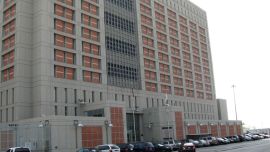Writes Dr Hale from the northern end of the frozen US Atlantic seaboard: “Almost too cold to think up here – what wouldn’t I give for some fire and fury to warm me up, even at the price of a Donald Trump presidency? Anyway if ‘Time’s up’ (for casting couches etc. after so many decades) has become the latest US catchphrase, it occurs to me that a whole bunch of people in your country are now saying: ‘Time’s up’ to Central Bank Governor Federico Sturzenegger as far as his orthodox monetary policy of fighting inflation with high interest rates goes, especially in making him move in the opposite direction to the Federal Reserve here (which upped interest rates from 2.48 to 2.55 percent on the same day). How does all this affect the course of 2018 as compared to the end-of-year forecasts only a fortnight ago?
And anything else I might have missed during the festive season?”.
My reply: “If your brains are frozen, mine are fried with the high temperatures here (plus the recent intake of seasonal libations) but I’ll attempt a response nonetheless. Tuesday’s interest rate reduction – rounded down from 28.75 to 28 percent – was absolutely token but Sturzenegger was contradicting his own premises with any cut, since rates should have risen with Congress deputies announcing 3.1 percent December inflation that same day (followed two days later by INDEC statistics bureau officially confirming that percentage, with 24.8 percent for last year in total).
“By minimising the cut Sturzenegger regained some credibility for Central Bank Independence but only partially – the harm had already been done at that December 28 press conference to relax inflation targets, which was the subject of last week’s column.
Like so many things in life, it is not so much a question of what was done as how it was done – upping the 2018 inflation target from 10 to 15 percent was simple realism but it could have been announced as a mere technicality instead of accompanying it with the message that monetary policy is now subordinated to political (and even more electoral, given Cabinet Chief Marcos Peña’s forte) criteria.
“Even if the Fed and Federico are now moving in opposite directions, time’s not up for Sturzenegger in terms of heading the Central Bank, despite some wild rumours recently, but his loss of authority looks terminal. If his inflation- targeting techiques have proved effective in so many countries around the world, they always looked like a pipe dream in Argentina ahead of relative price correction (with transport fares set to rise 66 percent in the first half of this year) and given the size of the fiscal deficit.
“But if Sturzenegger always knew exactly what he wanted, the same cannot be said of his heterodox critics. Productive sectors crowded out of credit markets by the public sector hunger for lower interest rates, not only in their own right but also for their side-effect of freeing the dollar and thus making export industries and regional economies more competitive – such priorities were shared by the political wing of a government apprehensive that an incipient slowdown (idle industrial capacity is still above 30 percent) could prove more electorally damaging than current levels of inflation. Yet a surging dollar could prompt a new inflationary spiral and severely complicate this summer’s collective wage bargaining – currency market volatility is usually more damaging than the exchange rate as such.
“Moving onto your question as to where all this leaves the 2018 forecasts published only a fortnight or so ago, some are more affected than others. The inflation estimates of the more conservative independent economists averaged out at 16.6 percent (as against the 8 to 12 percent range previously predicted by the Central Bank) – this figure is already 17.4 percent and a more general average would be around 19 percent. A dollar so static for most of 2017 was not expected to rise much above 20 pesos this year but this might well now change, for both voluntary and involuntary reasons.
“The government still stands a fair chance of reaching its target of reducing the fiscal deficit from 4.1 to 3.2 percent of Gross Domestic Product via subsidy cuts and pension adjustments, especially after posting a 29.2 rise in 2017 revenues, well ahead of any inflation estimates (there will be no tax whitewash windfalls this year but the tax base has expanded by more than 440,000 contributors as a result). But this figure is only a primary deficit – debt service will add a further 2.1 percent of GDP (while the government remains a minority in Congress, a factor which cost an estimated 45 billion pesos in the way of fiscal concessions last year in order to secure the passage of legislation). But other forecasts – such as growth (three percent) or unemployment (eight percent) – seem in no immediate danger with the change of criteria.
Yet a 2017 trade deficit of around US$9 billion is expected to hit 11 digits this year – the tourist deficit is already in 11 digits. The balance of payments has been in the red since 2013.
“What else? Keep an eye on the mortgage market because this has potential for rapid expansion from a low base (just 0.5percent of GDP) – especially private mortgages, which were growing at several times the pace of public last year (although the latter still account for 70 percent of the total). Last but not least, watch for a significant generational shift in this year’s public spending. Alongside transport and utility bill subsidies, pensions will be the target area for cuts and this move has its logic. Some analysts have contrasted Argentina’s current 30 percent poverty rate with around five percent 50 years ago (in contrast with the rest of the world where less than 10 percent are now destitute as compared with two-thirds impoverished a halfcentury ago). Yet despite the decline poverty is not much worse in that generation – 7.6 percent for the 60-plus agegroup – whereas almost half of children live below the poverty line with the poor tending to have larger families. Much of that problem lies in Greater Buenos Aires and to address it, Buenos Aires Governor María Eugenia Vidal not only enjoyed a 37.4-percent surge in provincial revenues last year (as against 29.2 percent at national level) but stands to gain 105 billion pesos more federal revenue-sharing funds in the next two years. Yet a more relaxed attitude towards inflation also makes poverty figures more flexible – 13 million people may lie below the poverty line now but a further 12 million live precariously above it.”
(*) Michael Soltys, who first entered the Buenos Aires Herald in 1983, held various editorial posts at the newspaper from 1990 and was the lead writer of the publication’s editorials from 1987 until 2017.




















Comments